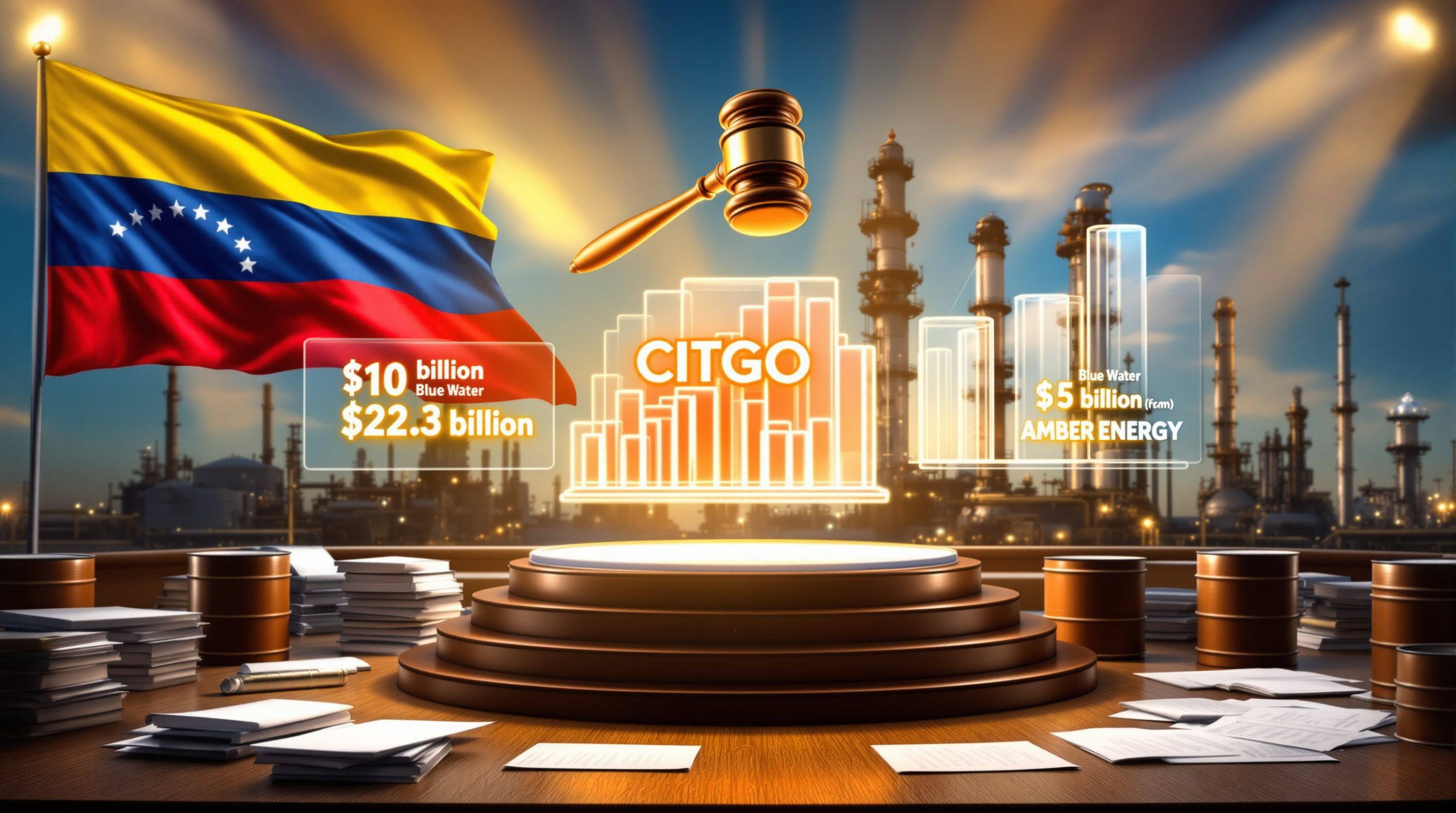The US-Australia critical minerals agreement represents a pivotal moment in international resource cooperation, establishing a framework to secure strategic materials essential for modern technology and defense systems. Furthermore, this partnership directly addresses growing concerns about supply chain vulnerabilities that have exposed nations to potential economic and security risks.
The US-Australia critical minerals agreement signed in October 2025 represents a watershed moment in international cooperation, directly addressing vulnerabilities exposed by concentrated supply chains and geopolitical tensions. With China controlling approximately 70% of global rare earth supply, allied nations face unprecedented risks to their technological sovereignty and national security.
Understanding Critical Minerals in Global Supply Chains
Critical minerals encompass rare earth elements, lithium, cobalt, graphite, and other materials that form the backbone of modern technology. Unlike traditional commodities, these minerals often have limited alternative sources and concentrated production in specific geographic regions, creating potential supply vulnerabilities.
The strategic importance became particularly evident in October 2025 when China expanded its export control list by adding five new rare earth elements, sending shockwaves through commodities markets worldwide. This action highlighted the precarious position of nations dependent on single-source suppliers for materials essential to their economic and defense capabilities.
Key characteristics of critical minerals include:
- Limited substitutability in high-tech applications
- Concentrated geographic production in specific regions
- Complex extraction and processing requirements
- Essential role in defense and renewable energy systems
Strategic Importance of Bilateral Mineral Partnerships
International agreements on critical minerals serve multiple strategic purposes beyond simple trade relationships. However, the October 2025 framework between the United States and Australia demonstrates how bilateral cooperation can address systemic vulnerabilities while creating economic opportunities.
The development of a comprehensive critical minerals strategy has become essential for maintaining competitive advantages in emerging technologies. In addition, establishing effective energy transition security measures ensures sustainable access to materials required for renewable energy infrastructure.
Primary strategic benefits include:
- Supply chain diversification away from single-source dependencies
- Enhanced national security through secured material access
- Economic resilience against supply disruptions
- Technology advancement through stable resource availability
The establishment of a US-Australia Critical Minerals Supply Security Response Group further demonstrates the institutional commitment to identifying priority minerals and supply vulnerabilities. Consequently, this creates a systematic approach to resource security planning that extends beyond traditional trade relationships.
How Does the US-Australia Critical Minerals Framework Address Global Challenges?
The bilateral framework between the United States and Australia represents a comprehensive approach to critical minerals security, targeting both immediate supply needs and long-term strategic objectives. This partnership directly challenges China's market dominance through coordinated investment and policy alignment.
Investment Scale and Financial Commitments
The agreement establishes substantial financial backing with each nation committing at least $1 billion in critical mineral investments within six months of the October 2025 signing. This represents one of the largest bilateral commitments to minerals development in recent history, signaling unprecedented urgency in addressing supply chain vulnerabilities.
| Investment Component | Amount | Timeline |
|---|---|---|
| US Government Commitment | $1 billion minimum | 6 months |
| Australian Government Commitment | $1 billion minimum | 6 months |
| EXIM Bank Allocation | $2.2 billion | Extended period |
| Arafura Equity Investment | $100 million | Immediate |
Australian Prime Minister Anthony Albanese emphasized that this historic framework will assist both countries in achieving resilience and security of critical minerals and rare earths supply chains. Furthermore, this includes mining, separation, and processing through coordinated investment and economic policy tools.
The establishment of a minerals strategic reserve forms a crucial component of this comprehensive approach. For instance, the reserve system enables both nations to maintain adequate stockpiles during potential supply disruptions.
Strategic Supply Chain Resilience Mechanisms
The framework incorporates multiple tools to strengthen supply chain security beyond traditional trade agreements. These mechanisms address both immediate vulnerabilities and long-term strategic positioning in the global minerals market.
Key resilience mechanisms include:
- Strategic stockpile coordination between allied nations
- Price-support mechanisms for priority commodities
- Targeted financing for critical mineral projects
- Joint procurement strategies for defense applications
The creation of specialized governance structures ensures systematic identification of supply vulnerabilities and coordinated responses to market disruptions. However, this moves beyond ad hoc crisis management to proactive strategic planning.
Which Critical Minerals Projects Benefit from the Agreement?
The bilateral framework specifically targets projects that can deliver significant impact on global supply chain security and technological advancement. The selection criteria emphasize production capacity, strategic location, and ability to provide alternatives to Chinese-controlled supply chains.
Rare Earth Elements Focus
Arafura Rare Earths' Nolans Project in Australia's Northern Territory serves as the flagship example of the agreement's strategic approach. Located 135 kilometres north of Alice Springs, this fully-integrated ore-to-oxide project demonstrates the scale and sophistication required to meaningfully impact global supply chains.
Nolans Project specifications:
- Production capacity: 340,000 tonnes of concentrate annually
- Global supply contribution: 5% of total rare earths production
- Mine life: 38-year operational period
- Primary product: Neodymium-praseodymium (NdPr) compounds
- Expected EBITDA: $460 million average per year
The project's focus on neodymium-praseodymium production is particularly strategic, as these elements are essential for permanent magnets used in wind turbines, electric vehicle motors, and advanced defence systems. With few large producers outside China currently operational, projects like Nolans represent critical alternatives to concentrated supply chains.
Diversified Mineral Portfolio
While the Nolans Project receives specific attention due to its advanced development stage and strategic importance, the framework encompasses broader mineral categories essential to modern technology and defence applications. The agreement's scope reflects understanding that supply chain security requires diversification across multiple critical materials.
Furthermore, recent developments in uranium market trends demonstrate how strategic partnerships can stabilise pricing and supply in volatile commodity sectors. Arafura Managing Director Darryl Cuzzubo noted that demand for both light and heavy rare earths is forecast to grow significantly over the next three decades, positioning well-developed projects to capture disproportionate shares of future growth.
What Are the Economic Implications for Both Nations?
The critical minerals agreement creates substantial economic opportunities while addressing strategic vulnerabilities for both the United States and Australia. The scale of investment commitments and projected returns demonstrate how national security considerations can align with commercial opportunities.
Manufacturing and Industrial Benefits
For the United States:
- Enhanced domestic manufacturing capabilities through secure material supplies
- Reduced dependence on adversarial supply chains
- Strengthened defence industrial base
- Advanced technology sector support
For Australia:
- Expanded mining sector development beyond traditional commodities
- Value-added processing opportunities
- Export diversification beyond traditional markets
- Technology transfer and innovation partnerships
The Australian government's $100 million equity investment in the Nolans Project exemplifies how strategic partnerships can combine public sector risk-taking with private sector efficiency. Consequently, this approach enables development of critical infrastructure that might otherwise struggle to secure adequate financing.
Market Response and Investment Returns
The immediate market response to the agreement announcement demonstrates investor confidence in the framework's potential. Arafura shares surged 27.1% on October 21, 2025, reaching levels not seen in more than a decade.
Arafura share performance metrics:
- 12-month low: 10.5 cents
- Post-announcement high: 62 cents
- 12-month return: Over 480%
- Single-day increase: 27.1%
This dramatic appreciation reflects investor recognition of the strategic value created by government backing for critical minerals projects. The transformation from a speculative mining stock to a strategic national asset demonstrates how geopolitical considerations increasingly drive investment valuations.
How Does This Partnership Counter China's Market Dominance?
The US-Australia framework directly addresses concerns about concentrated critical mineral supply chains, particularly China's dominant position controlling approximately 70% of global rare earth supply. The partnership represents a systematic approach to creating alternative supply sources rather than temporary market interventions.
Current Market Concentration Challenges
China's October 2025 expansion of export controls to include five additional rare earth elements demonstrated the vulnerability created by concentrated supply chains. These controls sent shockwaves through commodities markets and exposed the limited alternatives available to Western economies dependent on Chinese production.
The timing of the US-Australia agreement directly responds to these market disruptions, with participants explicitly acknowledging the need to break China's stranglehold over critical minerals development. This represents a fundamental shift from accepting Chinese dominance to actively creating competitive alternatives.
Recent policy developments, including the executive minerals order, have further emphasised the strategic imperative of supply chain diversification. For instance, this demonstrates coordinated government action to address systemic vulnerabilities in critical sectors.
Allied Supply Chain Development Strategy
The bilateral approach focuses on creating sustainable alternatives through technological capability building and coordinated investment strategies. Rather than attempting to completely replace Chinese supply, the framework aims to reduce dependency to manageable levels while creating leverage in international negotiations.
Strategic development priorities include:
- Alternative processing capabilities outside Chinese control
- Technology transfer for advanced separation techniques
- Quality standards alignment between allied nations
- Long-term supply contracts for strategic materials
Arafura Managing Director Darryl Cuzzubo emphasised that since April 2025, unprecedented disruptions to global trade and supply chain vulnerabilities have been exposed. Consequently, this makes thoughtful supply chain diversification essential for securing foundational solutions to meet growing future demands.
What Role Do Defence Applications Play in the Agreement?
Critical minerals are increasingly viewed as defence assets, with the agreement integrating mineral security into broader defence cooperation frameworks. This reflects understanding that technological superiority depends fundamentally on materials access rather than manufacturing capability alone.
Defence-Critical Material Requirements
Prime Minister Albanese specifically identified the Nolans Project's output as essential for energy security and defence applications. The project's focus on neodymium-praseodymium production directly supports defence systems requiring permanent magnets with superior performance characteristics.
Modern defence systems require substantial quantities of critical minerals for multiple applications:
- Permanent magnets for guidance systems and sensors
- Rare earth compounds for electronic warfare capabilities
- Advanced alloys for aerospace applications
- Battery materials for portable defence systems
The strategic classification of rare earth production as essential for defence highlights how material access directly impacts national security capabilities. Therefore, this makes supply chain security a defence imperative rather than purely economic consideration.
Strategic Stockpile Coordination
The establishment of the US-Australia Critical Minerals Supply Security Response Group creates institutional mechanisms for coordinated strategic planning. This body will identify priority minerals and supply vulnerabilities, enabling proactive stockpiling and resource allocation decisions.
The framework enables coordinated strategic stockpiling between allied nations, ensuring adequate reserves for both peacetime industrial needs and potential conflict scenarios. However, this approach recognises that defence applications often require materials with specifications unavailable through commercial markets.
How Will the Agreement Impact Global Critical Minerals Markets?
The substantial investment commitments and supply chain restructuring efforts are expected to create significant market shifts in critical minerals sectors. The framework's emphasis on production capacity and processing capability development suggests long-term market rebalancing rather than temporary price interventions.
Market Rebalancing and Price Effects
The agreement's focus on developing production capacity outside Chinese control will fundamentally alter global supply dynamics. With projects like Nolans contributing 5% of global rare earth production, the framework creates meaningful alternatives to Chinese suppliers while maintaining market stability.
According to the CSIS analysis of the US-Australia critical minerals framework agreement, this partnership represents a fundamental shift in how allied nations approach resource security. Arafura's share price performance demonstrates immediate investor recognition of this strategic value.
Market transformation indicators:
- Supply diversification reducing single-source dependency
- Strategic partnerships between producers and governments
- Premium valuations for non-Chinese production capacity
- Long-term contracts prioritising supply security over price
Investment Flow Restructuring
The $2+ billion in committed government funding represents a fundamental shift in critical minerals investment patterns. Traditional private sector risk assessment increasingly incorporates government strategic priorities, creating new funding mechanisms for development projects.
This restructuring creates opportunities for projects that align with strategic objectives while meeting commercial viability standards. Furthermore, the combination of government equity investment with private sector development expertise enables projects that might otherwise struggle to secure financing in volatile commodities markets.
What Are the Environmental and Sustainability Considerations?
The critical minerals agreement emphasises responsible mining practices and environmental stewardship as core components of supply chain development. This approach recognises that sustainable alternatives to Chinese production must meet higher environmental standards to maintain political and social acceptance.
Sustainable Development Integration
Both nations commit to implementing comprehensive environmental management systems for supported projects. These requirements reflect understanding that strategic resource development must balance security objectives with environmental protection to ensure long-term viability.
The framework promotes responsible mining practices through:
- Environmental impact assessments for all supported projects
- Water management protocols for mining operations
- Waste minimisation strategies in processing facilities
- Site rehabilitation requirements for mining operations
Circular Economy Development
The agreement incorporates circular economy principles to maximise resource efficiency and minimise environmental impact. This approach recognises that sustainable critical minerals supply requires comprehensive lifecycle management rather than traditional linear extraction models.
Circular economy components include:
- Recycling infrastructure development for critical minerals
- End-of-life recovery systems for technology products
- Material efficiency improvements in manufacturing
- Secondary supply chain development from recycled materials
These initiatives position the US-Australia partnership as offering environmentally superior alternatives to traditional mining practices. In addition, they meet strategic supply objectives while addressing environmental concerns that could otherwise complicate project development.
How Does This Agreement Position Both Countries for Future Growth?
The critical minerals partnership establishes a foundation for sustained economic and strategic advantages in an increasingly technology-dependent global economy. The framework's emphasis on long-term capability building rather than short-term market interventions reflects sophisticated understanding of competitive dynamics.
Technology Leadership Opportunities
Secure critical mineral supplies enable both nations to lead in emerging technology sectors where material access determines competitive advantage. The 38-year mine life of projects like Nolans provides strategic planning horizons that support sustained technology development programmes.
Strategic technology advantages include:
- Renewable energy leadership through reliable battery materials
- Advanced defence capabilities with cutting-edge technologies
- Electric vehicle market competition through secure supply chains
- Technological sovereignty in critical sectors
Arafura Managing Director Darryl Cuzzubo noted that with demand for both light and heavy rare earths forecast to grow significantly over the next three decades, well-positioned projects can capture disproportionate shares of future growth. However, this requires strategic partnerships and technological capability development.
Long-term Strategic Benefits
The agreement creates lasting advantages through institutional cooperation and technological development that extend beyond individual mining projects. These strategic benefits compound over time as allied supply chain networks develop resilience and competitive advantages.
Enduring strategic advantages include:
- Allied supply chain networks resistant to geopolitical disruption
- Shared expertise in advanced mineral processing
- Coordinated research and development initiatives
- Enhanced diplomatic cooperation on resource security
The framework establishes mechanisms for ongoing collaboration that can adapt to changing strategic circumstances. Consequently, this maintains core objectives of supply security and technological advancement while responding to evolving global conditions.
What Challenges and Risks Might Affect Implementation?
Despite the agreement's comprehensive scope and substantial financial commitments, several factors could influence successful implementation of the critical minerals framework. Understanding these challenges enables proactive risk management and realistic expectations for project timelines and outcomes.
Technical and Operational Challenges
The development of alternative critical minerals supply chains faces significant technical hurdles beyond financial considerations. Projects like Nolans require sophisticated processing capabilities and skilled workforce development to achieve production targets and quality specifications.
Key implementation challenges include:
- Skilled workforce availability for specialised mining operations
- Infrastructure development requirements in remote locations
- Technology transfer complexities for advanced processing
- Regulatory coordination between different jurisdictions
Arafura has not yet made a final investment decision on the Nolans Project despite government backing, indicating that technical and financial considerations remain complex. For instance, this demonstrates how even strategic support requires careful evaluation of commercial viability factors.
Market and Geopolitical Considerations
External factors beyond the control of bilateral partners could significantly impact project success and strategic objectives. The volatile nature of commodities markets and evolving geopolitical tensions create ongoing uncertainties for long-term planning.
Critical external risk factors include:
- Commodity price volatility affecting project economics
- Competing international partnerships for critical minerals
- Technological disruption changing mineral demand patterns
- Environmental opposition to new mining developments
The framework's success depends partly on maintaining political support through potential changes in government leadership and evolving strategic priorities. According to Australia's framework agreement with the US, sustained commitment across multiple electoral cycles remains essential for project success.
Investment Risk Considerations
While the US-Australia critical minerals agreement represents significant strategic cooperation and substantial investment commitments, investors should carefully evaluate individual company prospects, technical project risks, and market conditions before making investment decisions. The volatility demonstrated in companies like Arafura, with shares ranging from 10.5 cents to 62 cents over twelve months, illustrates both the opportunities and risks inherent in critical minerals investments.
Furthermore, the success of specific projects depends on multiple factors including regulatory approvals, environmental assessments, technical feasibility studies, and market conditions that can change significantly over project development timelines.
The critical minerals partnership between the United States and Australia represents a fundamental shift in how strategic resources are developed and secured in the modern economy. Through coordinated investment, technological cooperation, and supply chain diversification, this framework addresses immediate vulnerabilities while building long-term competitive advantages for both nations. However, successful implementation requires sustained commitment, technical excellence, and careful risk management to achieve the strategic objectives outlined in this historic US-Australia critical minerals agreement.
Ready to Capitalise on Critical Minerals Investment Opportunities?
Discovery Alert's proprietary Discovery IQ model delivers real-time alerts on significant ASX mineral discoveries, including critical minerals projects that could benefit from strategic partnerships like the US-Australia framework. Stay ahead of major announcements in rare earths, lithium, and other strategic commodities by exploring Discovery Alert's discoveries page to see how historic mineral discoveries have generated substantial returns for early investors.




